Unlocking the Power of Incidental Teaching
Incidental teaching is a dynamic, child-centered method that leverages everyday situations to foster language, social, and behavioral skills in children with autism. By integrating natural interests and motivation into therapy, educators and caregivers can promote meaningful and lasting development. This article explores practical strategies, implementation techniques, and the benefits of incidental teaching in ABA, illustrating how this approach can be seamlessly incorporated into daily routines and therapeutic practices.
Understanding Incidental Teaching in ABA
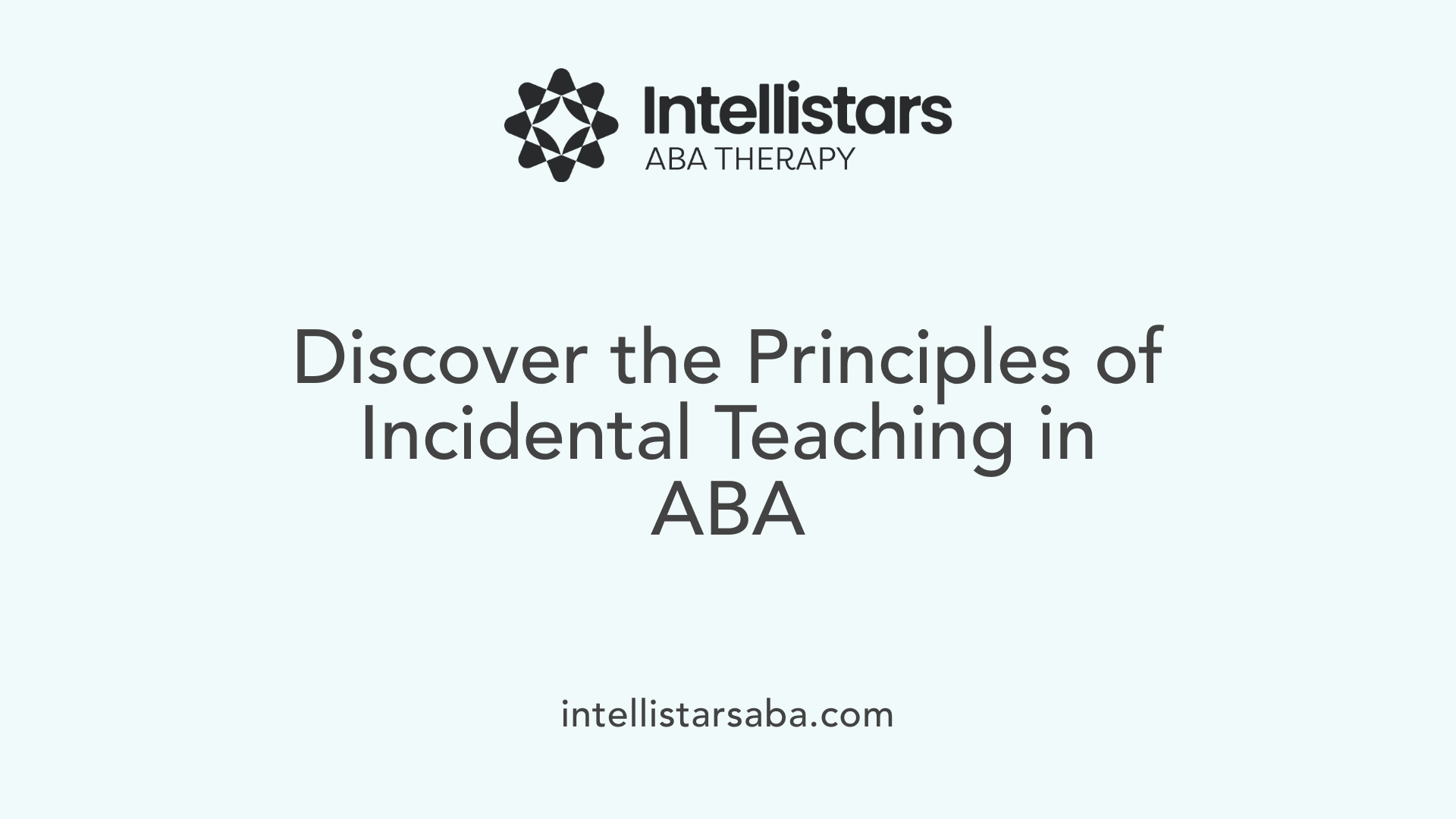
Principles of incidental teaching
Incidental teaching is founded on the idea that children learn best when they are motivated by their own interests and during natural routines. It uses the child's spontaneous actions as opportunities to teach language and social skills. The approach involves the environment being carefully set up to promote engagement, such as placing desired items out of reach, which encourages the child to initiate communication or requests.
Throughout the session, the adult closely observes the child's behaviors and interests, waiting for natural initiations. When the child shows interest, the adult responds with prompts, modeling correct responses, and providing reinforcement, like access to the object or praise. This method ensures that learning occurs in authentic contexts, making skills more likely to transfer across situations.
The naturalistic approach within ABA
Incidental teaching is a naturalistic teaching method within ABA that emphasizes learning in real-life settings rather than controlled, artificial environments. It integrates seamlessly into everyday routines, such as play, mealtime, or community outings, making learning more relevant and motivating for children. The adult acts as a facilitator rather than a direct instructor, fostering a child's independence and spontaneous communication.
Child-led learning and motivation
A core aspect of incidental teaching is that it is child-led. The child's interests, behaviors, and initiations drive the teaching moments. When children initiate interaction—such as reaching for an object or looking at something—the adult provides contingent reinforcement and prompts as needed, encouraging the child to elaborate or respond verbally. This focus on natural motivation helps children develop a desire to communicate and learn, leading to more meaningful skill transfer across settings.
Practical Strategies for Implementation
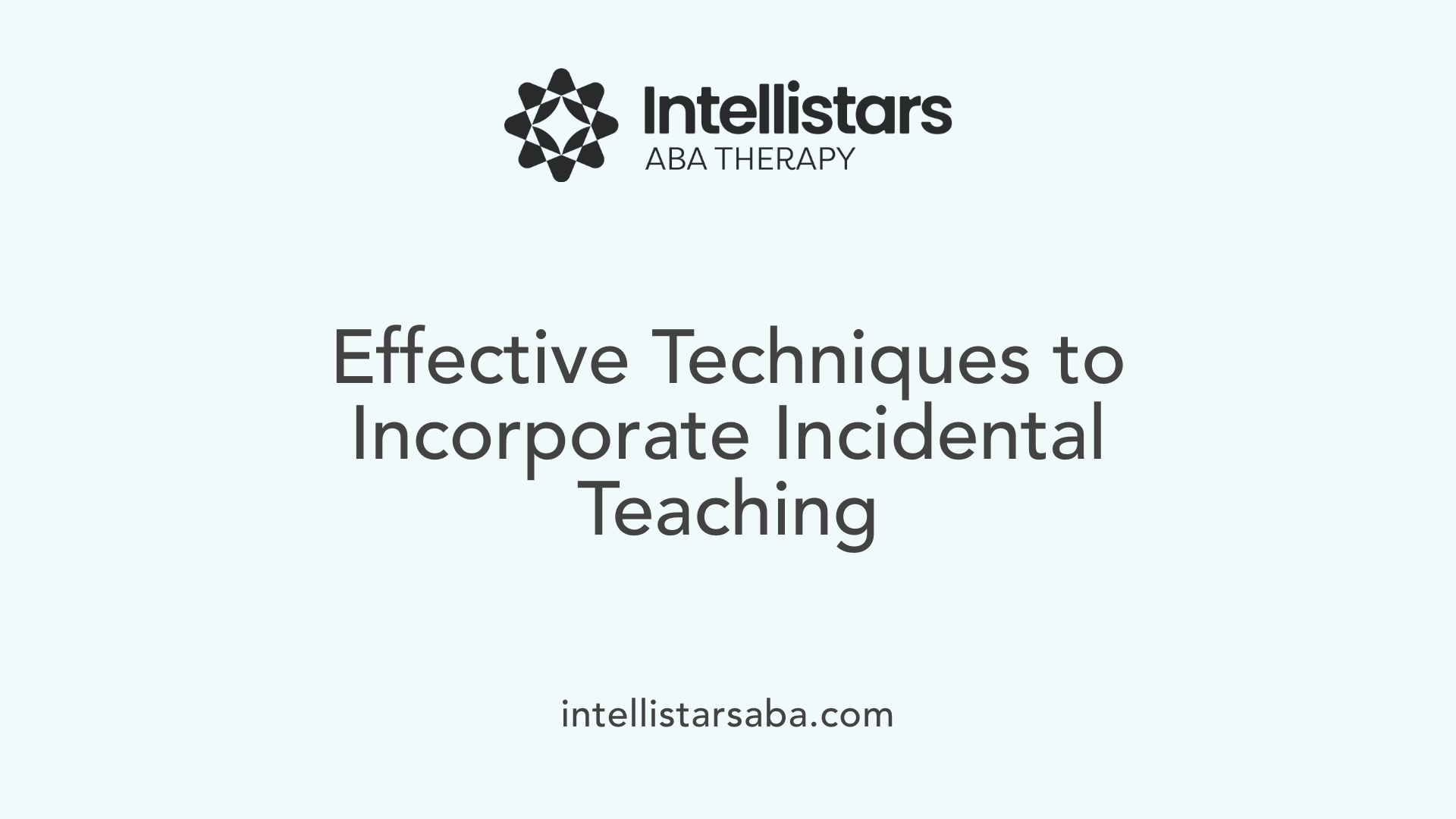
How can incidental teaching be effectively implemented in ABA therapy sessions?
Implementing incidental teaching effectively involves keen observation and strategic environmental arrangements. Practitioners should pay close attention to the child's interests and natural motivations to identify optimal moments for intervention. Setting up the environment with relevant props or materials—such as placing preferred items out of reach or in closed containers—encourages the child to initiate requests or interactions. During natural routines, adults wait patiently, providing minimal prompts and avoiding rushing the child. When the child shows interest or attempts communication, caregivers might model responses, ask open-ended questions, or use gentle prompts to support language development. Reinforcement plays a crucial role; offering contingent praise or access to desired objects after successful communication encourages repetition and motivation. Consistently incorporating incidental teaching during daily routines—like mealtime, play, or outings—helps ensure skills are generalized across settings, making learning more meaningful and sustainable. Key strategies include:
- Watching and listening to the child's interests
- Arranging the environment to promote requesting
- Using models, prompts, or visual cues if needed
- Rewarding responses with praise or access to preferred items
- Embedding teaching moments across routines and locations These approaches foster natural, spontaneous interactions that promote motivation, communication, and skill transfer.
When and how should incidental teaching be used in ABA therapy?
Incidental teaching is best employed during naturally occurring moments where the child expresses curiosity or initiates interaction, suited for children approximately between 2 and 9 years old. Therapists and parents should observe cues indicating interest and provide an environment that encourages social responses. The process begins with attentively watching and listening to the child's actions or vocalizations. When the child shows interest—like pointing to an object or vocalizing—the adult engages, waits for the child's response, and then supports elaboration if needed. This may involve modelling the correct response, gestural prompts, or time delays to allow the child to initiate. During these interactions, adult support is minimal and unobtrusive, respecting the child's desire to lead. Reinforcements such as praise or access to the object motivate the child and reinforce functional communication. Incorporating incidental teaching into everyday activities—such as playtime, mealtime, chores, or outings—maximizes opportunities for skill development across environments. The goal is to promote spontaneous communication, initiate social exchanges, and generalize skills to real-life contexts. Effective application tips include:
- Observing to identify moments of interest
- Prompting only as needed to support response elaboration
- Using natural reinforcers like praise or preferred items
- Embedding teaching moments in routines and community settings This naturalistic approach enhances motivation, encourages communication, and fosters independence.
Timing and Context of Use
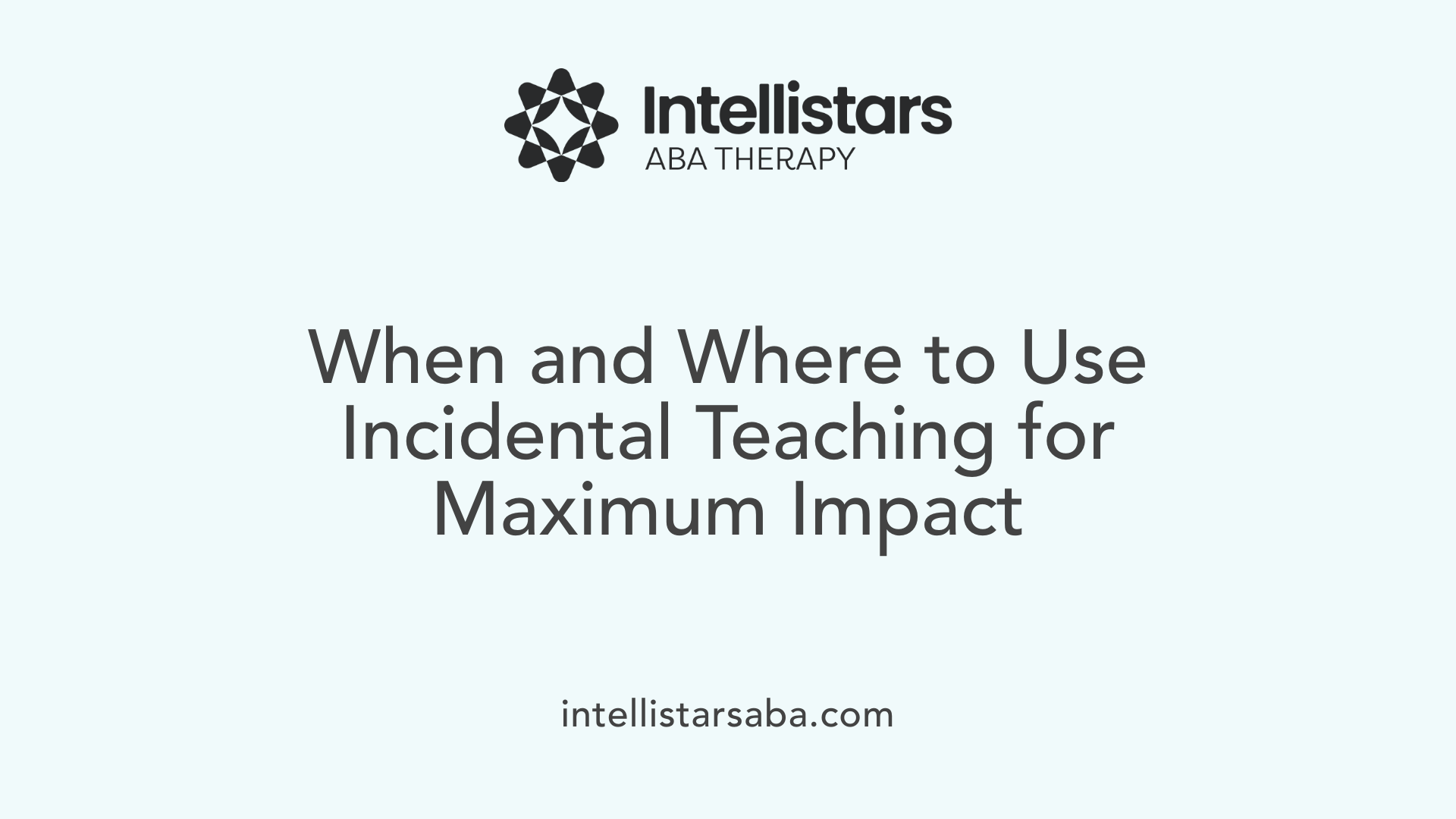 Incidental teaching is most effective when applied during natural, everyday situations that stimulate the child's innate curiosity or interest. This method relies on observing the child's spontaneous initiations or interests, making it particularly suitable for children between the ages of 2 and 9, especially those with autism or developmental delays.
Incidental teaching is most effective when applied during natural, everyday situations that stimulate the child's innate curiosity or interest. This method relies on observing the child's spontaneous initiations or interests, making it particularly suitable for children between the ages of 2 and 9, especially those with autism or developmental delays.
In practice, adults such as parents, teachers, or therapists should actively watch and listen to the child during routine activities—meals, play, outings, or household chores. Once a child's interest is observed, the adult engages appropriately, perhaps by commenting or posing related questions, and then patiently waits for the child's response. This pause creates a teachable moment allowing the child to initiate communication or request.
The core steps in incidental teaching include watching and listening, engaging when the child shows interest, waiting for the child's response, providing support or prompts if needed using least intrusive prompts, and then reinforcing the child's successful attempt. Reinforcement often involves giving access to the desired item or activity and praise. By grounding learning in meaningful contexts and giving the child ownership of the interaction, incidental teaching promotes motivation and aids skill generalization across settings.
In addition to daily routines, incidental teaching can be integrated during various settings such as at home, in school, during community outings, or in social settings. Setting up the environment, such as placing desired items out of reach, or stopping ongoing activities like swinging or singing, can strategically prompt the child's initiations. Overall, its application hinges on timing—waiting for natural moments—and context—fostering interactions aligned with the child's interests—making learning both engaging and functional.
Research indicates that when adults use environmental arrangements, modeling, and contingent reinforcement during suitable moments, children develop improved language, social, and behavioral skills in a variety of settings. These teachable moments foster motivation, promote spontaneous communication, and facilitate transfer of skills across different environments, further supporting the child's overall developmental progress.
Benefits and Child Development Impact
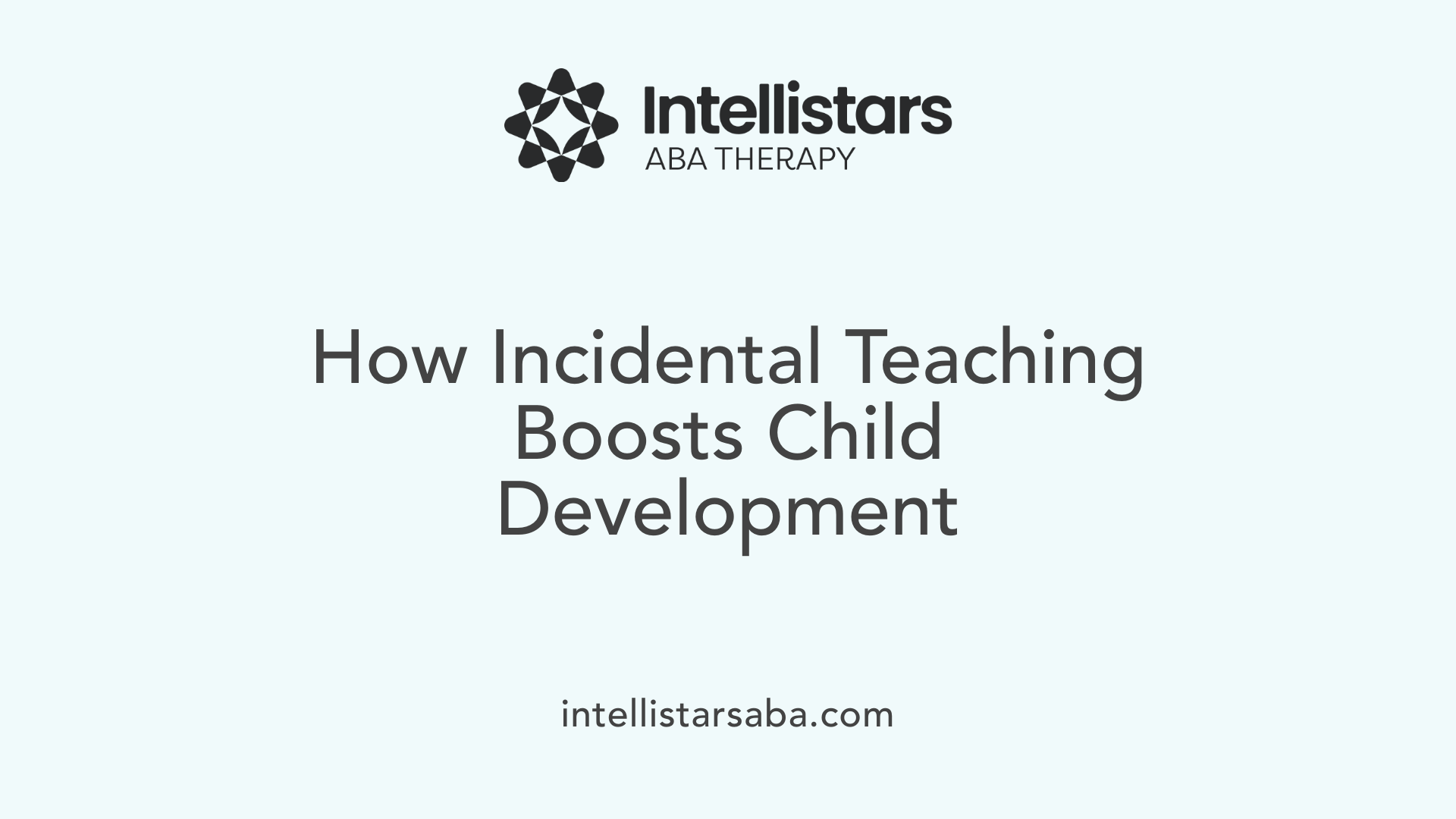
What are the benefits and effectiveness of incidental teaching in child development?
Incidental teaching provides many advantages in helping children develop essential skills in a natural and engaging way. By focusing on what the child finds motivating and incorporating everyday routines, this approach makes learning both relevant and enjoyable.
Children become more active participants in their learning process, which boosts their confidence and independence. They learn to initiate interactions, make choices, and transfer behaviors across different environments, which enhances their generalization of skills.
One of the central strengths of incidental teaching is its foundation in Applied Behavior Analysis (ABA). It encourages positive behaviors and language use without the rigidity of traditional methods, supporting spontaneous communication and social interactions.
This method also improves motivation because it uses activities and items that children already like, making them more eager to participate. As children respond positively, their social, play, and language skills improve significantly.
Research shows that incidental teaching is effective for children with autism and other developmental delays. It helps foster a holistic growth, integrating social skills, communication, and independence within meaningful contexts. Overall, the child-centered, naturalistic nature of incidental teaching makes it a powerful tool for promoting lasting development and social engagement.
Incorporating Incidental Teaching into Broader ABA Strategies
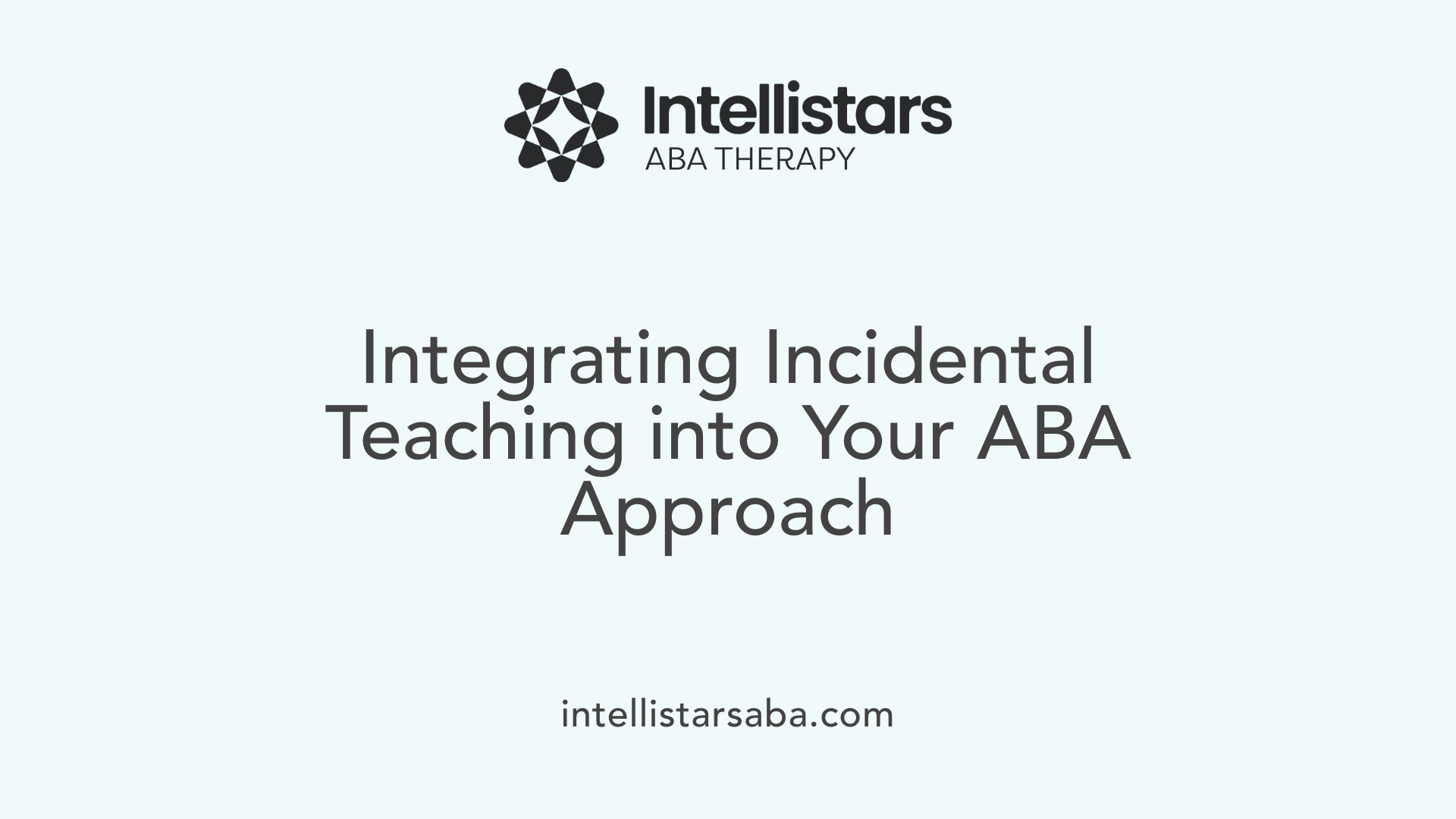
How can incidental teaching be integrated into broader ABA therapy practices?
Incidental teaching fits seamlessly into a comprehensive ABA therapy framework by focusing on natural, real-life contexts for skill development. This approach relies on the child's innate interests and spontaneous initiations to foster communication, social, and functional skills. In practice, professionals observe everyday routines such as play, meals, or outdoor activities, and then create learning opportunities by strategically positioning tempting items or activities out of reach.
During these moments, the therapist or caregiver prompts the child to request or comment, using minimal, least-intrusive prompts that can evolve from nonverbal cues to full modeling if needed. Reinforcing successful responses immediately—by allowing access to the desired object or activity—strengthens the child's motivation and participation.
Integrating incidental teaching with structured ABA techniques like Discrete Trial Training (DTT) involves balancing child-led, spontaneous interactions with planned, systematic teaching moments. This naturalistic approach encourages generalization of skills because children practice in varied real-world settings, beyond clinical environments.
Collaboration among a team of professionals—including speech-language pathologists, occupational therapists, teachers, aides, and parents—is crucial. Consistent strategies across settings improve transfer and maintenance of skills, making incidental teaching part of a holistic intervention plan.
Developing such a plan involves careful assessment of the child's interests, environmental arrangements, and specific goals. It requires ongoing monitoring and adaptation to ensure that the child remains motivated and that skills are reliably transferred across different contexts and social situations.
This blended approach—combining incidental, child-led learning with more structured practices—supports meaningful, functional development and promotes greater independence and communication in children with autism or developmental delays.
Maximizing Child Engagement and Learning
Incorporating incidental teaching into ABA therapy offers a powerful, naturalistic approach to enhance child's motivation, communication, and independence. By creating environments rich with opportunities aligned to the child's interests, professionals and caregivers can facilitate skill transfer across diverse contexts. When combined with traditional structured techniques and supported through collaborative efforts, incidental teaching can significantly improve developmental outcomes, making therapy more engaging, relevant, and effective. Emphasizing the power of natural learning environments, this approach embodies the core of ABA's child-centered philosophy and fosters lifelong skills that extend beyond therapy sessions.
References
- Incidental Teaching - Florida Atlantic University
- Using Incidental Teaching To Teach Children With Autism
- What Is Incidental Teaching? - WebMD
- [PDF] Incidental Teaching - Knapp Center for Childhood Development
- 25 Ways to Create Learning Opportunities with Incidental Teaching
- Incidental Teaching - Special Learning
- Incidental teaching and autism | Raising Children Network
- Incidental Teaching - Florida Atlantic University






